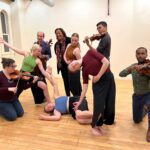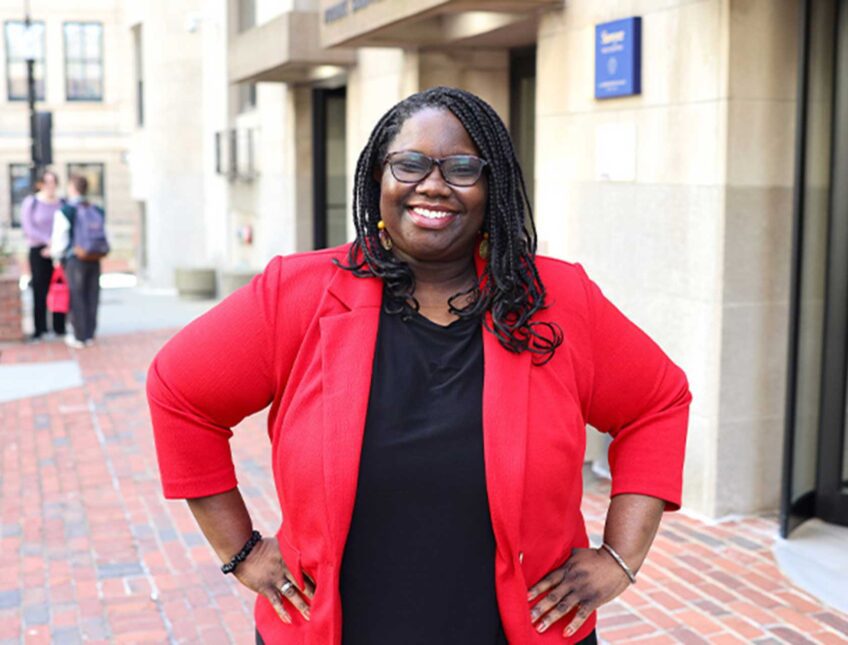Students, activists call for free MBTA passes
Students within 2 mi. of schools are now exempt

Every day, Elijah sets out from Madison Park Vocational Technical High School and heads up the stairway to Jeep Jones Park, a steep beginning to his mile-and-a-half journey to his Blue Hill Avenue home.

Madison Park Vocational Technical High School freshman Elijah talks to reporters about his daily mile-and-a-half walk to and from school.
It’s a trek he has made since 7th grade at the Timilty Middle School, which abuts Jeep Jones Park. While the school department provides Boston students — those attending BPS schools, charter schools and private schools — with an M7 bus pass, middle and high school students who live less than two miles from their schools are not eligible.
Those students qualify instead for a reduced-cost S pass, which enables them to board a bus or train for $1.10 per ride, rather than the $2.25 it costs to ride with a pre-paid Charlie Card or the $2.75 without. But the $30 monthly cost for the pass is out of reach of many of the 7,000 BPS students who qualify for it, advocates say.
“Think of a family that has a 7th, 8th and 10th grader,” says Sheena Collier, an organizer with the Dudley Street Neighborhood Initiative. “It can become a big cost.”
While BPS officials advocate for expanding high school instruction beyond the confines of classrooms to businesses and institutions across the city, some students are faced with choosing between whether they walk to school or save their transportation money for an after-school activity.
For Boston Day and Evening Academy Senior Jameel Johnson, that choice means making a 25-minute trek from his Elm Hill Avenue home to the Dudley Square school so he can attend choir rehearsal in Dorchester.
Johnson’s mother, who works in retail, is the family’s sole breadwinner, leaving Johnson little discretionary spending money.
“Sometimes I can’t afford to go to choir,” he said.
Last week, Johnson and other activists joined Elijah for his mile-and-a-half walk with reporters and City Councilor Tito Jackson in tow to dramatize the difficulty of commuting on foot. While last Wednesday’s weather was a pleasant 72 degrees, Elijah says he was forced to weather the record-setting 2014 winter storms, sharing snow-covered streets with cars that struggled up and down the hills he walks.
Jackson, huffing to keep up with the high school student, said he plans to advocate for the city to pony up the estimated $2 million it would cost to provide M7 passes for students within the two-mile walk zones around their schools.
“It’s absolutely essential that we as a city step up and fund one of the most fundamental needs our students have,” he said between gasps for breath. “Well over 80 percent of our students are poor. This is a fundamental issue of fairness.”
Boston Public Schools spokesman Daniel O’Brien said in an email statement that the department is examining its $110 million transportation budget as part of its long-term financial planning.
“Boston Public Schools respects the power of student voice and listens to community concerns on this issue,” O’Brien’s statement reads.

![Banner [Virtual] Art Gallery](https://baystatebanner.com/wp-content/uploads/2024/04/NJ-H_1-150x150.jpg)




